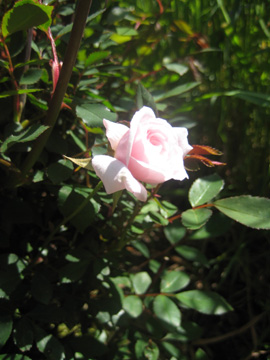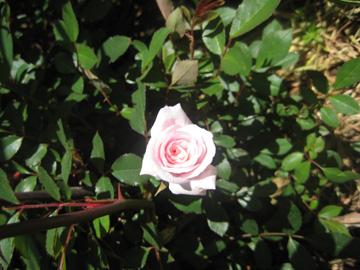Incorporating "green" landscape in design contracts
Topic: green landscape design
Last week the course I’m instructing at UC Berkeley Extension focused on the regulatory and legal framework for doing green building. This is an important context when carrying out a project’s sustainable design / green building requirements.
Landscape architects often subcontract with an architect to provide design services to a project owner or proponent. The 2007 AIA contract document between architect and owner (or project proponent) now contains wording that makes sustainable design / green building a contractual obligation. http://www.aia.org/aiaucmp/groups/aia/documents/pdf/aias076840.pdf. How does this contractual obligation between the architect and the architect’s client flow down to the subcontracting landscape architect? Would the landscape architect need to provide these same services to the client?
Article 3.2.3 of the contract document reads as follows:
§ 3.2.3 The Architect shall present its preliminary evaluation to the Owner and shall discuss with the Owner alternative approaches to design and construction of the Project, including the feasibility of incorporating environmentally responsible design approaches. The Architect shall reach an understanding with the Owner regarding the requirements of the Project.
Article 3.2.5.1 of that document reads as follows:
§ 3.2.5.1 – The Architect shall consider environmentally responsible design alternatives, such as material choices and building orientation, together with other considerations based upon program and aesthetics, in developing a design for the project that is consistent with the Owner’s program, schedule and budget for the Cost of the Work. The Owner may obtain other environmentally responsible design services under Article 4.
Note that this language is not referring to a published green building rating/standards system such as the USGBC’s LEED, nor does it necessarily refer to any environmental or building code regulation.
Let’s say that these provisions do flow down to the landscape architect. How to meet this obligation?
As a landscape architect you might be providing “green” services such as stormwater management using on-site infiltration, habitat conservation design, water efficient irrigation, and so on for the project; you might discuss various approaches and alternatives with the owner and reach agreement with the owner, under the general direction of the architect. If you document this discussion and agreement, perhaps with a description of the options, notes about decisions taken, and an exchange of emails among you, owner, and architect, would you then be covering these requirements?
Posted by geoffreykatz
at 10:23 PM PDT
Updated: Wednesday, 9 March 2011 11:35 PM PST

 At long last the heritage rose in Tennessee Valley has bloomed, has not been eaten by a deer, and I was there with a camera. Here are pics. Very powerful and lush
At long last the heritage rose in Tennessee Valley has bloomed, has not been eaten by a deer, and I was there with a camera. Here are pics. Very powerful and lush  fragrance. Overall about 3cm / little over an inch.
fragrance. Overall about 3cm / little over an inch. 